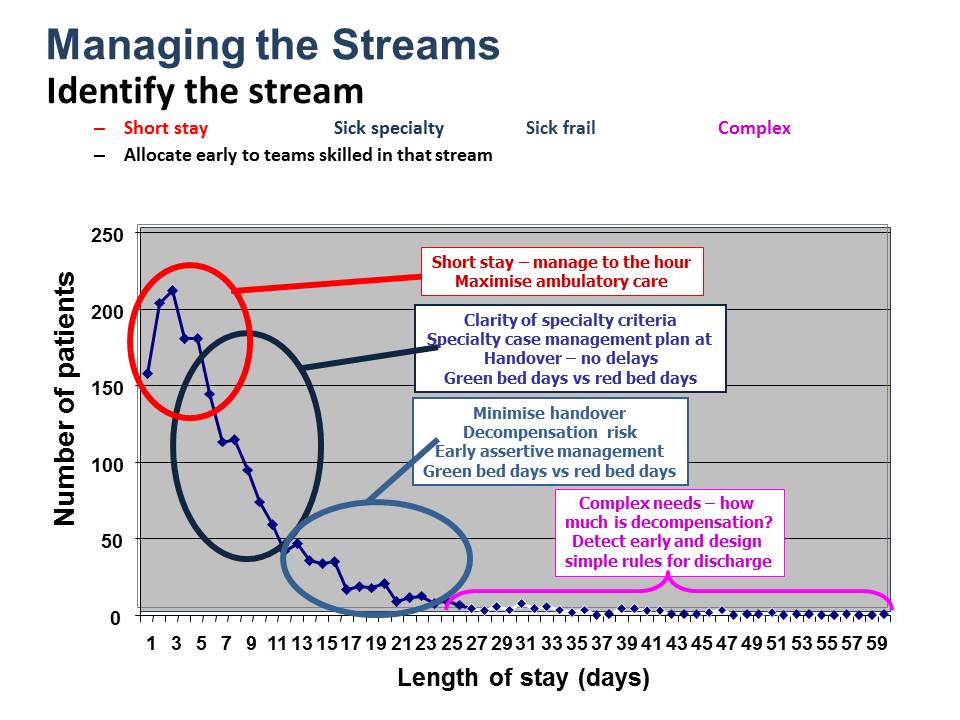
The ‘stranded patient metric’ is defined as the number of beds occupied by patients who have been in hospital 7 days or more. A proportion of these will have a truly catastrophic illness and need to be in hospital that long. However, a significant proportion will have spent 7 or more days in hospital because of unnecessary waits in the system. Many are internal, including waiting for a decision, diagnostic test, intervention, referral etc. It is important to be certain that whatever the patient is waiting for necessarily needs to be done as an in-patient. The effective use of Expected Date of Discharge (EDD) and Clinical Criteria for Discharge (CCD) from point of admission as part of the case management plan assists in the daily focus on what our patients are waiting for. EDD should be set assuming ideal recovery and no delays, thus helping to ‘flush out’ any constraints within a patient’s journey.
The daily Board Round and ‘one-stop ward round’ are the means by which waits are identified and effectively managed by the team. If the wait cannot be managed by the team, this should be escalated within the hospital for resolution. Peer review of stranded patients by one clinical team to another can ask key questions:
- Why does this patient need to remain in hospital? • What is being done and by whom to get this patient home?
- What could have been done in the first few days to prevent this patient becoming ‘stranded’.
Hospital based de-conditioning results in a functional decline that is now dependent on external agencies to support discharge. The aim is to eliminate waits to shorten hospital admissions and reduce the consequences of prolonged admission. Patients at Risk of Increased Stay (PARIS) are mostly older people with frailty, but not exclusively, and need to be identified at the point of admission. They need zero tolerance of all unnecessary delays to prevent de-conditioning along with very pro-active case management, early mobilisation and prevention of unnecessary ‘bed rest’.
Hospitalisation, independent of the acute condition, frequently results in marked reduction in habitual activity which itself causes deconditioning. If de-conditioning is prevented, the patient’s discharge can remain simple. The ‘stranded patient metric’ frequently is at its lowest on Christmas Eve, rises after the Christmas/New Year period and is a major contributor to the ‘over-crowded’ status of hospitals in January. It is assumed that this increase in ‘stranded patients’ is due to the significant reduction in ‘care support’ in the community during and after the festive season and/or an increase in illness severity. However, there is a need to recognise that internal delays, diagnostics, decisions etc, are also significantly increased in this time period. Attention to internal delays during ‘predictable event planning’ can go some way to mitigating the rise of the ‘stranded patient metric’, whilst the wider system focuses on the external delays.
